
Poker: A Comprehensive Beginner's Guide to Texas Hold'em
Introduction to Poker
Poker is one of the most popular card games in the world, played by millions in casinos, online platforms, and private gatherings. If you're just starting your poker journey and want to learn the fundamentals, this comprehensive beginner's guide is the only resource you'll need. By the time you finish reading, you'll understand the basics of poker, including hand rankings, gameplay mechanics, and betting structures, so you can confidently sit at the table and play your first hand.
Poker is a game of skill, strategy, and a bit of luck. Among the many variations of poker, No Limit Texas Hold'em stands out as the most widely played and recognized format. This is the version you’ve likely seen in movies, on TV, or in major tournaments. The goal of Texas Hold'em is straightforward: make the best possible five-card hand using your two private "hole cards" and the five community cards shared by all players. Alternatively, you can bluff and convince your opponents that your hand is the strongest, forcing them to fold.
Understanding Poker Hand Rankings
Before diving into gameplay, it's crucial to familiarize yourself with poker hand rankings, as these determine who wins the pot. Let's go through the rankings from the weakest hand to the strongest:
1. High Card
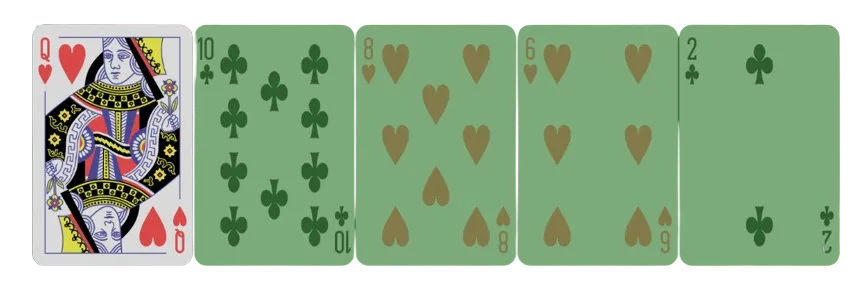
This is the weakest possible hand. If no player has a pair or a stronger hand, the winner is determined by the highest-ranking card in their hand. For example, an Queen-high hand (e.g., Queen-10-8-6-2) beats a King-high hand.
2. One Pair
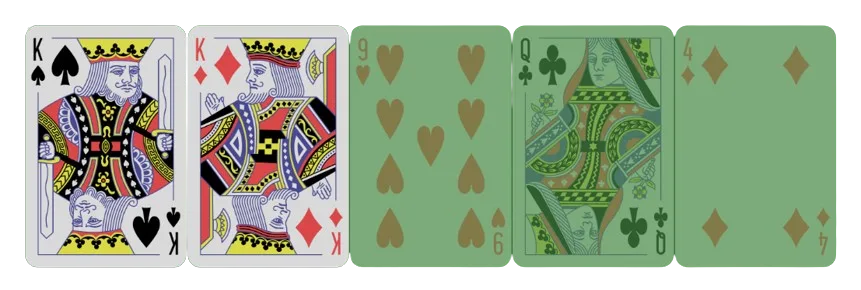
A pair consists of two cards of the same rank. For example, two Aces (King-King) make the strongest one-pair hand, while a pair of twos (2-2) is the weakest.
3. Two Pair
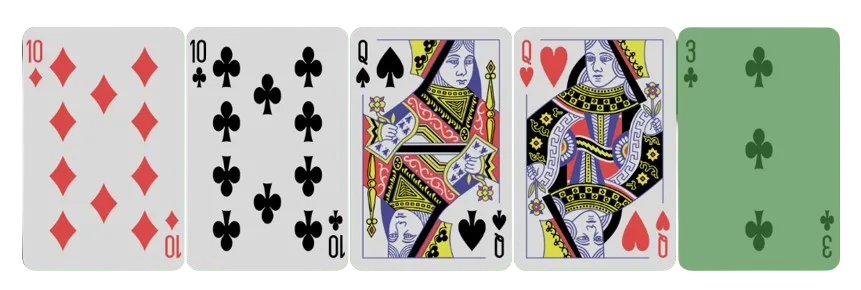
Two pairs are stronger than one pair. For instance, a hand with a pair of Kings and a pair of Sixes (King-King and Six-Six) beats a hand with a pair of Queens and a pair of Tens.
4. Three of a Kind

Also known as "trips," this hand contains three cards of the same rank. For example, three Jacks (Jack-Jack-Jack) beat two pairs.
5. Straight
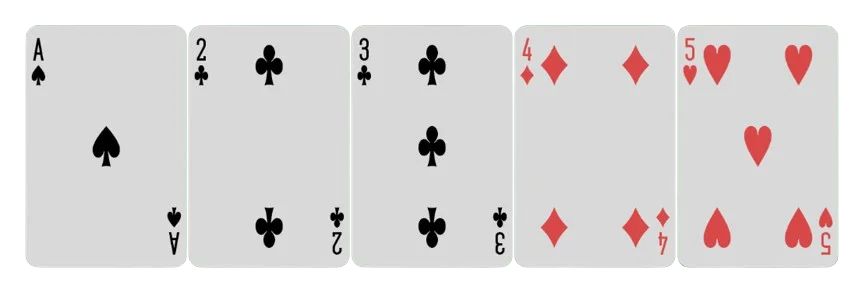
A straight consists of five cards in sequential order, such as 8-9-10-Jack-Queen. The cards must be of different suits, and an Ace can either be the highest card (e.g., 10-Jack-Queen-King-Ace) or the lowest (e.g., Ace-2-3-4-5), but not both. A hand like Queen-King-Ace-2-3 is invalid, as "wraparounds" are not allowed.
6. Flush
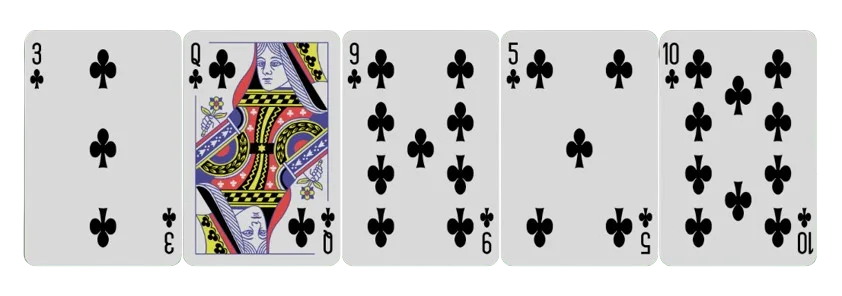
A flush is made up of five cards of the same suit, such as five Hearts or five Spades. The cards do not need to be in sequential order.
7. Full House
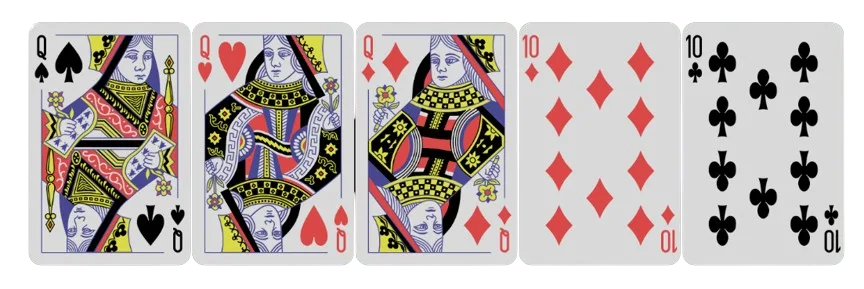
A full house, often referred to as a "boat," is a combination of three-of-a-kind and a pair. For instance, three Kings and two Fives make a full house.
8. Four of a Kind

Four cards of the same rank form "quads," which is a very strong hand. For example, four Aces (Ace-Ace-Ace-Ace) will likely win in most situations.
9. Straight Flush

A straight flush consists of five consecutive cards of the same suit, such as 6-7-8-9-10 of Clubs. This is an exceptionally rare hand.
10. Royal Flush

The strongest hand in poker, the royal flush, is a straight flush from 10 to Ace (10-Jack-Queen-King-Ace) in the same suit. The odds of being dealt this hand are approximately 1 in 30,000!
The Flow of a Poker Hand
Now that you're familiar with hand rankings, let’s break down how a typical hand of Texas Hold'em is played.
1. Key Positions at the Table
Poker involves strategic positioning, and understanding these positions is critical:
- The Button (Dealer Position): This position rotates clockwise after each hand and indicates who is technically the dealer for that round.
- Small Blind: The player to the immediate left of the button must place a small forced bet before the cards are dealt.
- Big Blind: The player to the left of the small blind posts a larger forced bet, typically twice the size of the small blind.
These forced bets, known as "blinds," ensure there is always money in the pot to play for.
2. Dealing the Cards
Once the blinds are posted, each player is dealt two private cards face down (hole cards). These are the only cards unique to each player, and they remain hidden until the showdown.
3. The First Betting Round (Pre-Flop)
The first betting round begins with the player to the left of the big blind. Each player has three options:
- Fold: Surrender your cards and exit the hand.
- Call: Match the amount of the big blind.
- Raise: Increase the size of the bet. The minimum raise must be at least double the big blind, but in No Limit games, you can bet all your chips at any time (go "all-in").
If no player raises, the big blind has the option to check (stay in the hand without adding more chips). Once all bets are matched, the next phase begins.
4. The Flop
The dealer reveals the first three community cards, called the flop, face up on the table. These are shared by all players and can be used in combination with their hole cards to form a five-card poker hand.
A second round of betting follows, starting with the first active player to the left of the button. Players can now:
- Check: Pass the action to the next player without betting.
- Bet: Place chips into the pot.
- Call, Raise, or Fold: As described earlier, depending on the situation.
5. The Turn
Once the betting on the flop concludes, the dealer places a fourth community card, called the turn, face up on the table. Players now have six cards to choose from (two hole cards and four community cards) to make the best five-card hand. Another round of betting takes place.
6. The River
The final community card, the river, is dealt face up. Each player now has seven cards (two hole cards and five community cards) to form their hand. This is followed by the final round of betting.
7. The Showdown
If two or more players remain after the final betting round, it's time for the showdown. Players reveal their hole cards, and the strongest five-card hand wins the pot. If all other players fold at any stage, the remaining player automatically wins the pot without showing their cards.
Essential Poker Terms to Know
To play confidently, it's helpful to understand some basic poker terms:
- Pot: The total amount of chips wagered during a hand.
- All-In: Betting all your remaining chips.
- Bluff: Betting or raising with a weak hand to force opponents to fold stronger hands.
- Check: Passing the action without betting, as long as no bet has been made.
- Fold: Surrendering your hand and forfeiting any claim to the pot.
- Raise: Increasing the current bet.
Tips for Beginners
- Start Slow: Focus on understanding the rules and hand rankings before diving into complex strategies.
- Play Tight and Aggressive: Stick to strong starting hands and bet decisively.
- Learn to Fold: Don’t feel obligated to play every hand. Knowing when to fold is just as important as knowing when to bet.
- Pay Attention: Observe your opponents’ actions for clues about their hand strength.
- Practice, Practice, Practice: Play free games online or with friends to build confidence.
Conclusion
Poker is a game of skill, strategy, and patience. By mastering the basics of Texas Hold'em, including hand rankings, betting rounds, and gameplay structure, you're well on your way to enjoying this exciting and competitive game. Remember, even the most seasoned players started as beginners. Keep learning, practicing, and refining your skills, and you'll see improvement over time.
Good luck at the tables!